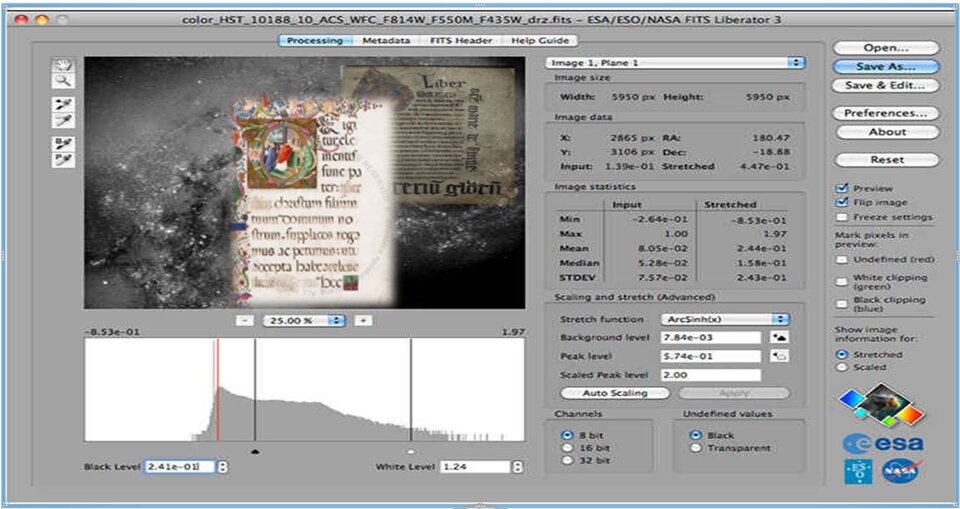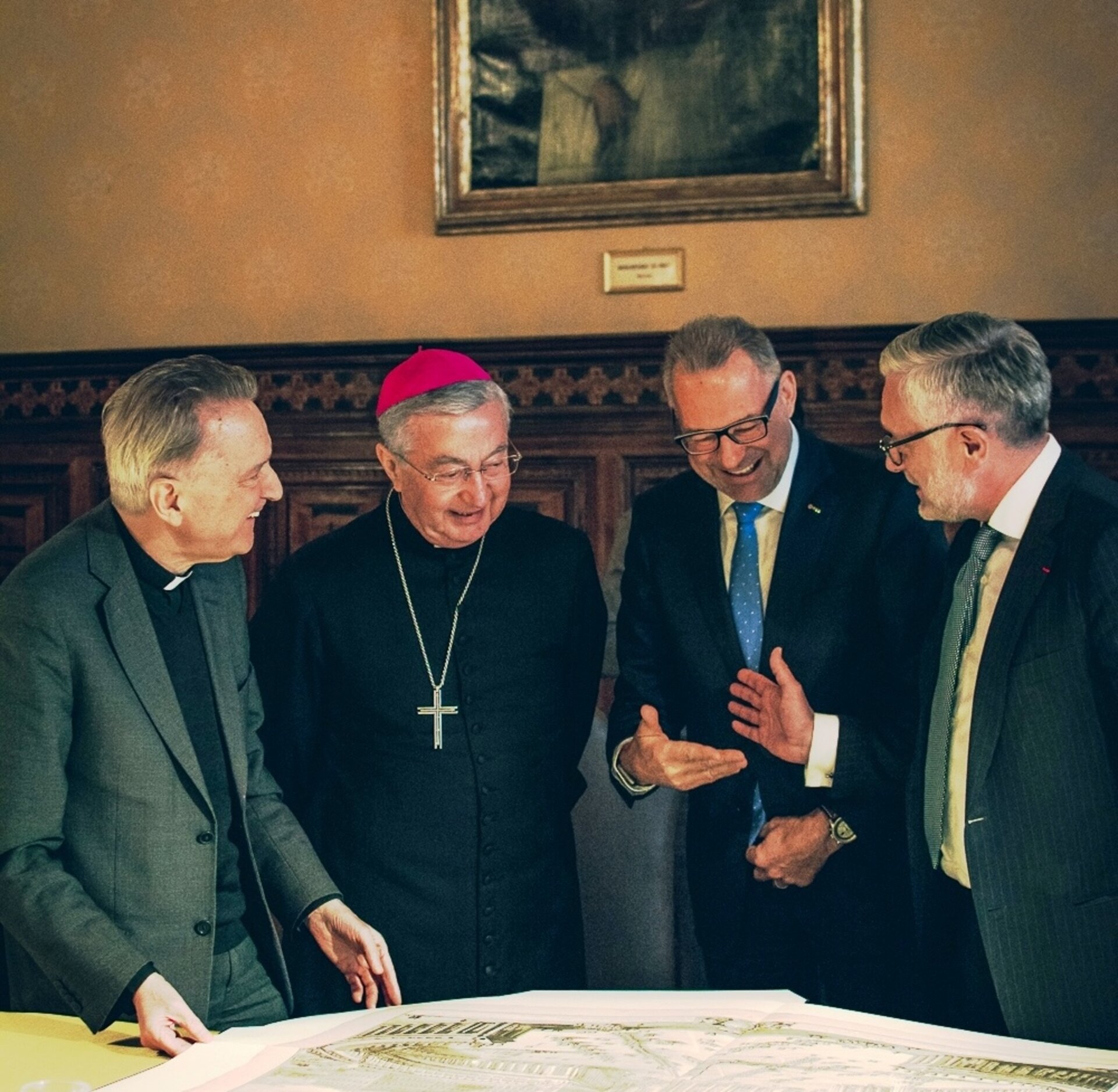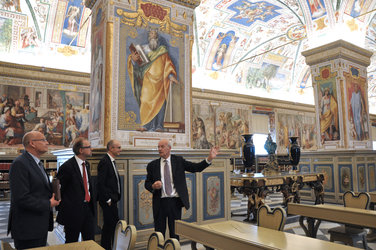ESA and Vatican work to preserve heritage data
Following an agreement signed in 2016, ESA and the Vatican Apostolic Library have presented the preliminary results on how they are using the same method to manage their respective long-term data preservation projects and how this can create new initiatives.
For more than 500 years, the Vatican Apostolic Library has been preserving, protecting and restoring a patrimony of manuscripts and books.
Now, with the benefit of today’s technological era, the Library is digitalising their entire collection of manuscripts, which includes over 80 000 codices, mostly from the Middle Ages and the Humanism Period.
The aim of the Library’s project, which started in 2010, is to preserve high-resolution images for the long term and make them freely available online through the Digital Vatican Library.
Like the Library, ESA is also dedicated to preserving and ensuring access to large volumes of data.
Through its Heritage Data Programme, for example, ESA ensures the preservation of and access to archived Earth observation satellite data for scientists, policy makers and value-adding companies.

Josef Aschbacher, ESA’s Director of Earth Observation Programmes, said, “ESA and the Vatican Apostolic Library face similar issues in the preservation and management of big volumes of heritage data.
“The Library is now preserving their manuscripts digitally by using data formats that were originally developed in the space domain. We are now seeing how both ESA and the Vatican can benefit from the advances they have made.”
The Library’s preservation project is based on the Flexible Image Transport System (FITS) format, which was developed by ESA and NASA in the 1970s and stems from radio astronomy.
The procedures, file formats and tools further developed by the Library demonstrate how this is facilitating their digitalisation project, but also how it is suitable for the long-term preservation of ESA’s satellite data and information.
In turn, technology used to exploit satellite data has be applied to cultural heritage assets from the Vatican Library as proof of concept for multidisciplinary cross-valorisation.

Archbishop Jean-Louis Bruguès, Archivist and Librarian of the Holy Roman Church, said, “ESA and the Vatican Apostolic Library share a long history of pioneering work in their respective fields and a long-lasting collaboration aimed at the preservation and worldwide accessibility of the respective patrimonies of data and information holdings.”
“The Joint Declaration between ESA, the Library and the EC fosters synergies between the expertise, know-how and resources available through the three institutions, and paves the way for concrete collaboration for the benefit of humankind.”
The EC’s Director for Space Policy, Copernicus and Defence Philippe Brunet added, “It is important to make heritage assets in terms of data and knowledge widely accessible and exploitable to stimulate innovation and growth in Europe.
“The Joint Declaration will enable concrete steps in that direction.”
Further collaboration is expected to allow more synergies to be exploited in evaluating and benchmarking formats and in piloting emerging technologies and processes for the preservation and use of data and knowledge by a broader community.
FITS format standardisation and demonstration of multidisciplinary applications through the use of heritage data and information from ESA, the Vatican Apostolic Library and the EC will be addressed in the short term.






